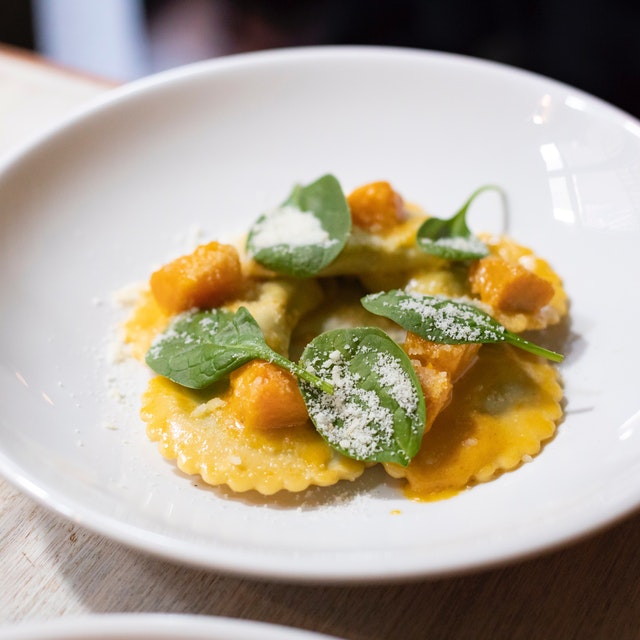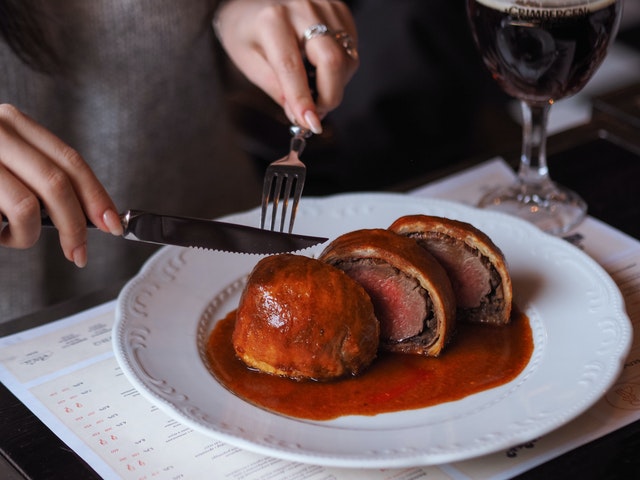Guest post by Katerina Francis-Duma
The Jubilee is upon us, (God save the happy and glorious bank holiday) and who doesn’t like an extra day off? This four-day weekend is the perfect opportunity to try a slightly more advanced recipe than you usually might, and we have just the dishes you should look into.
Here are three delicious recipes to enjoy while celebrating the UK’s longest-reigning monarch.
1. Spinach and ricotta ravioli

Photo by Maria Bortolotto – taken from Pexels
This dish requires plenty of ‘olio di gomito’ (elbow grease). Our recipe includes handcrafted ravioli, packed with fresh spinach, creamy ricotta and lemon zest, topped off with a fragrant sage butter.
According to the experts over at Pasta Evangelists, pairing sage butter with ravioli often proves to be a winning combination. The earthy herb complements most ingredients, including seafood, red meat, game and poultry, as well as lighter cheese and vegetable fillings.
Making ravioli is a complex process, but can it be made easier by having the right ingredients, familiarity with your equipment, and (most importantly) time. This is not a dish to be rushed, but savoured and enjoyed — why not give it a go over the long weekend?
Ingredients
Serves 2
For the spinach filling
- 170g fresh spinach
- 170g ricotta
- Zest of 1 lemon
- Nutmeg, to taste
- Salt and black pepper, to taste
For the ravioli
- 400g flour
- 4 large eggs
For the sauce
- 100g room temperature butter
- 6 sage leaves
- Salt and black pepper, to taste
Method
For the spinach filling
- Fill a large pan halfway with water and bring to a boil.
- Add the spinach and simmer. Once wilted, rinse it and place in the centre of a tea towel. Gather the towel ends and twist them over the sink or a bowl, squeezing your parcel to drain as much water as possible.
- Transfer the spinach to a mixing bowl and add the ricotta and lemon zest, then grate in a generous amount of fresh nutmeg.
- Cover and refrigerate mixture for 1 hour.
For the ravioli
- Begin by piling flour onto a wooden board and create a well in the centre.
- Break the eggs into the middle and whisk together the flour and egg, gradually integrating more flour from the crater’s perimeter until you have a thick, gooey paste.
- Using a dough scraper, integrate additional flour into the dough by compressing and pushing the edges into the core. Begin pressing the contents together with your hands and knead for at least 10 minutes until smooth.
- Wrap the dough in a dish towel and put it aside for 20-30 minutes at room temperature.
- Unwrap the dough and roll it flat. Feed the pasta sheet through the machine on its widest setting at least three times, before going on to the next setting. Repeat this procedure, working your way from thickest to thinnest.
- Cut your pasta sheet in half and place the two halves next to each other.
- Take the spinach mixture out of the refrigerator and add it to a piping bag. Pipe the filling into a line along the centre of one of the strips, spaced 2 inches apart.
- Place the second strip squarely on top of the first, and press firmly on the dough around the filling with a square ravioli cutter.
- Bring a big pot of lightly salted water to a boil and cook until al dente.
For the sauce
- Roughly cut the sage leaves and add them to the butter. Season with salt and black pepper to taste.
- In a large saucepan, slowly boil until the sage crisps and the mixture acquires a rich golden colour.
- Once cooked, transfer the ravioli to the sauce. Toss gently to coat.
2. Poulet Reine Elizabeth
Poulet Reine Elizabeth or ‘coronation chicken’ is a delectable blend of cold roasted chicken, fresh mango and spring onion in a creamy curry sauce. The dish was first invented by Rosemary Hume, of the famed Le Cordon Bleu culinary school, while preparing the menu for Queen Elizabeth II’s coronation supper in 1953.
Today, it is used (far too carelessly, in our humble opinion) as a simple salad — or as a flavourless sandwich stuffer. However, when cooked to perfection, coronation chicken is a tasty and nostalgic meal. This weekend, to celebrate the UK’s longest reigning monarch, enjoy Poulet Reine Elizabeth as a lunch dish. It’s delicate, flavourful and fit for a queen.
Ingredients
Serves 4
- 2 skinless, free-range chicken breasts
- 1 tbsp olive oil
- 1 unwaxed lemon, zest and juice
- 1 finely chopped shallot
- 1 chopped red chilli
- 1 large mango, peeled and diced
- 2 tbsp Madras curry powder
- 2 tbsp tomato purée
- 100ml dry white wine
- 100ml chicken stock
- 150ml mayonnaise
- 75ml creme fresh
- 4 finely chopped spring onions
- 2 tablespoons chopped fresh coriander
- Green salad leaves, to serve
- Salt and freshly ground black pepper
- 20g butter
Method
- Preheat the oven to 190°C/190°F
- Rub the chicken with olive oil. Season with salt and pepper and sprinkle with lemon zest.
- Roast the chicken for 90 minutes , or until thoroughly cooked.
- In a frying pan, melt the butter and sauté the shallot and chilli for 5 minutes.
- Stir in the curry powder and cook for 2–3 minutes.
- Add the tomato purée, chicken stock and wine. Stir well and simmer for an additional 2-3 minutes. Take off the heat and keep aside.
- In a mixing bowl, combine the mayonnaise and crème fraîche, then toss in the curry dressing. Fold in the mango, spring onions, lemon juice and coriander.
- Once the chicken is cooled, cut it into bite-sized pieces.
- Season with salt and pepper before adding to the curry dressing. Serve with green salad leaves.
3. Beef Wellington

Photo by Nadin Sh – taken from Pexels
Beef Wellington is a decadent dish of English origin that traditionally uses fillet steak, Parma ham and puff pastry. It is widely understood that the dish was made to commemorate the first Duke of Wellington, Arthur Wellesley, and his victory in the Battle of Waterloo on June 18, 1815.
Some recipes suggest using beef tenderloin or fillet mignon. As always, tailor to your preference — this recipe works well with layers of prosciutto, pâté or even spinach.
Beef Wellington is a real show-stopper and the ultimate crowd-pleaser. It’s the quintessential dish to pay homage to beloved British heritage and to enjoy with friends over the long bank holiday.
Ingredients
Serves 6
- 1.2kg beef fillet
- 400g chopped mushrooms
- 30g butter
- 375g puff pastry
- 100g Parma ham
- 1 gently beaten free-range egg
- 32g cup instant gravy powder
- 1 cup of hot water
- 3 tbsp olive oil
- 1 tsp horseradish cream
- 1 finely chopped onion
- 2 finely chopped garlic cloves
- 1 thyme sprig, leaves only
Method
- Preheat a frying pan and add 1 tablespoon of oil and the butter. On a medium heat, fry the mushroom and garlic for 5 minutes.
- Stir in the thyme, remove from the heat and leave to cool.
- Sear the beef for 30-60 seconds in a hot skillet with a little olive oil, until browned all over and rare in the centre. Remove from the heat and set aside to cool.
- On a lightly floured surface, roll out the pastry to a 3mm-thick rectangle,
- Spread out the prosciutto, then spread the mushroom mixture evenly on top.
- Place the beef fillet on top of the mushrooms, then brush the pastry edges with egg wash.
- Fold pastry over to contain the beef. Tuck the edges under to form a bundle and press to shut.
- Place on a baking sheet and brush again with the egg.
- Preheat the oven to 220°C/200°F. Bake for 20-25 minutes or until puffed and golden.
- Allow wellington to rest for 10 minutes before slicing. In a heat-proof container, combine the gravy powder and hot water. Then stir the horseradish cream into the gravy, until smooth. Serve with the beef Wellington.





